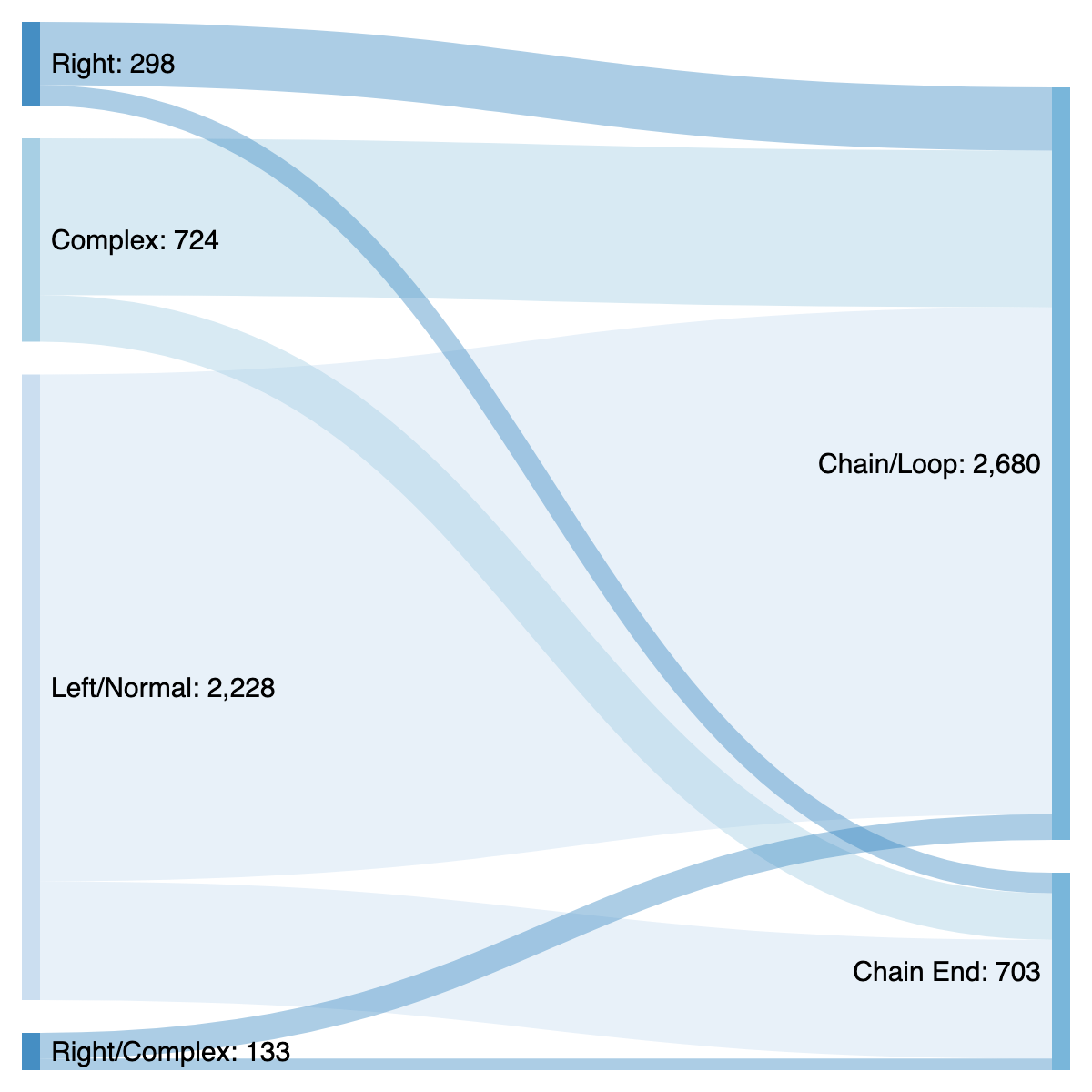Right Kidneys and Kidneys with Complex Anatomy are More Likely to be Transplanted to the Waiting List in a National Kidney Paired Donation Program
1Urology, University of California Los Angeles, Los Angeles, CA, 2Johns Hopkins University, Baltimore, MD, 3University of California Los Angeles, Los Angeles, CA, 4East Carolina University, Greenville, NC
Meeting: 2021 American Transplant Congress
Abstract number: 171
Keywords: Donation, Kidney transplantation, Living donor, Waiting lists
Topic: Clinical Science » Kidney » Kidney Paired Exchange
Session Information
Session Name: Kidney Desensitization/KPD
Session Type: Rapid Fire Oral Abstract
Date: Sunday, June 6, 2021
Session Time: 6:00pm-7:00pm
 Presentation Time: 6:25pm-6:30pm
Presentation Time: 6:25pm-6:30pm
Location: Virtual
*Purpose: In the era of laparoscopic donor nephrectomy, there is a preference for left kidneys with a single renal artery. In paired exchange, the receiving transplant center may have less control over the donor nephrectomy and may receive a right kidney or a kidney with complex anatomy (more than one renal artery or renal vein). Despite clear evidence on adverse outcomes in living donor transplantation, these organs may be deemed less desirable and instead sent to the deceased donor waiting list at the end of a paired exchange chain.
*Methods: Using data from the national transplant registry (SRTR) and the National Kidney Registry (NKR) with anatomy data, we describe the end of chain distribution and outcomes of right and complex kidneys (2/2008-12/2019). We also assessed center-level behavior in the transplantation of these organs.
*Results: Out of 3,383 eligible NKR transplants, there were 431 (12%) right kidneys transplant and 857 (25%) complex kidneys transplanted. Out of 703 chain ends (transplants to the waiting list), 114 (16%) were right and 207 (28%) were complex kidneys. There were 41 (6%) chain end kidneys that were right and complex. Right, complex, and right/complex kidneys were more likely to be transplanted to the list (p<0.001), although the absolute difference is small. There were no statistically significant differences in delayed graft function, death-censored graft failure, or mortality when comparing NKR recipients of left/normal chain end kidneys to right and/or complex kidneys. Center-level practice varied significantly. Among 94 NKR centers, 13 never utilized a right or complex kidney. Among 73 centers receiving a chain end kidney, 39 centers used right chain end, 50 centers used a complex chain end, and 22 used a right/complex chain end.
*Conclusions: Despite insignificant differences in outcomes, many NKR centers avoid right and/or anatomically complex kidneys. Right and/or complex kidneys were more likely to be sent to the waiting list instead of being used in paired exchange chain or loop. Anatomically complex and right living donor kidneys from the National Kidney Registry, and other KPD systems, are an important source of kidneys for patients on the deceased donor waiting list.
To cite this abstract in AMA style:
Osbun N, Thomas A, Waterman A, Veale J, Segev D, Leeser D. Right Kidneys and Kidneys with Complex Anatomy are More Likely to be Transplanted to the Waiting List in a National Kidney Paired Donation Program [abstract]. Am J Transplant. 2021; 21 (suppl 3). https://atcmeetingabstracts.com/abstract/right-kidneys-and-kidneys-with-complex-anatomy-are-more-likely-to-be-transplanted-to-the-waiting-list-in-a-national-kidney-paired-donation-program/. Accessed December 25, 2025.« Back to 2021 American Transplant Congress

